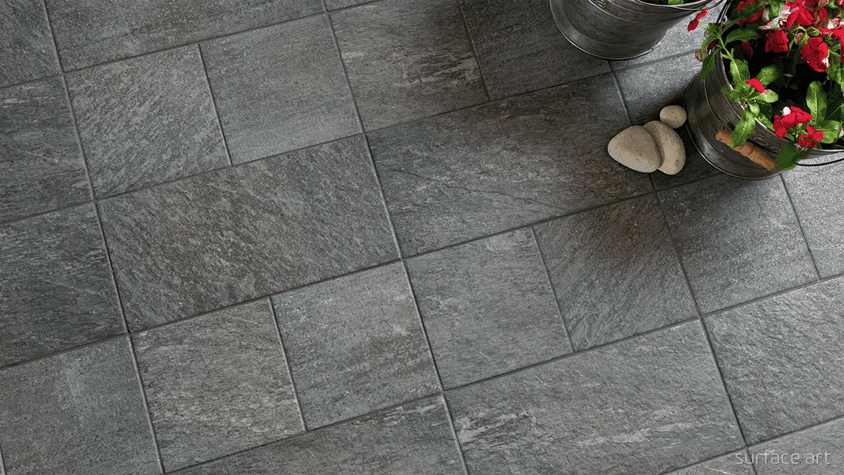About Our Tile

We are often asked “is tile the right choice for my project?” or “is going to last?” The second question is easy to answer since tile has been used for thousands of years are still remains the most popular surface in the world. The former question is a bit more complicated since many factors come into play when deciding on surface material. Some questions to ask yourself before selecting a product is:
- What am I trying to accomplish? A specific look? Pure function in performance? Easy installation?
- What is my budget?
- What is my timeline for this project?
- Will this material help my resale value?
Surface Art understands that tile may not be the right decision for EVERY project however we want you to be comfortable in your decision. The only way you can answer these question is to know about the products you are purchasing.
Tile is the most ancient surface material in the world and while the aesthetics have changed substantially the manufacturing process has not.
RAW MATERIAL
- Clay
- Felspar to lower firing temperature
- Chemical additives for shaping
- Glass for glazing
COMPOSITIONS
Wall Tile
Inherently porous and ceramic and to be used on the wall only. A porcelain glaze is applied to the face of the tile making the surface impervious. However the body of the tile has an absorption rating from 7% to 10%. Indoor use only
Ceramic
Usually used in residential applications, this tile that has a water absorption rating from 3% to 7%. This tile will perform as specified under normal traffic conditions. Indoor use only
Vitreous Porcelain
Can be used in commercial environments. This category hold a water absorption rating of .5% to 3%. Indoor use only
Impervious Porcelain
Tile that has a water absorption rating of .5% or below. Indoor and exterior use is acceptable
Creating Tile


Step 1 – Raw Material Processing: The raw materials are pulverized and filtered to create a consistent size aggregate for the body of the tile. The finer the pulverization the more dense the result. Water is added to the pulverized raw material to make what is known as “slip”
Step 2 – Drying: The slip is then air dried in a tumbler
Step 3 – Forming: 2.500 tons of pressure is then pressed upon the dried slip within a given frame. The frame is the basic shape of the end resulting tile
Step 4 – Drying: The tiles are ten dried over the course of several days. The pace of the drying is slow to reduce shrinkage cracks.
Step 5 – Glazing or image impression: Depending on the tile this step involves either a wet/dry glaze or digital imprint on the face of the tile
Step 6 – Firing: This is where tile gets its strength. Under intense heat (up to 2,370 degrees F) the tiles are hardened and their chemical composition changes.